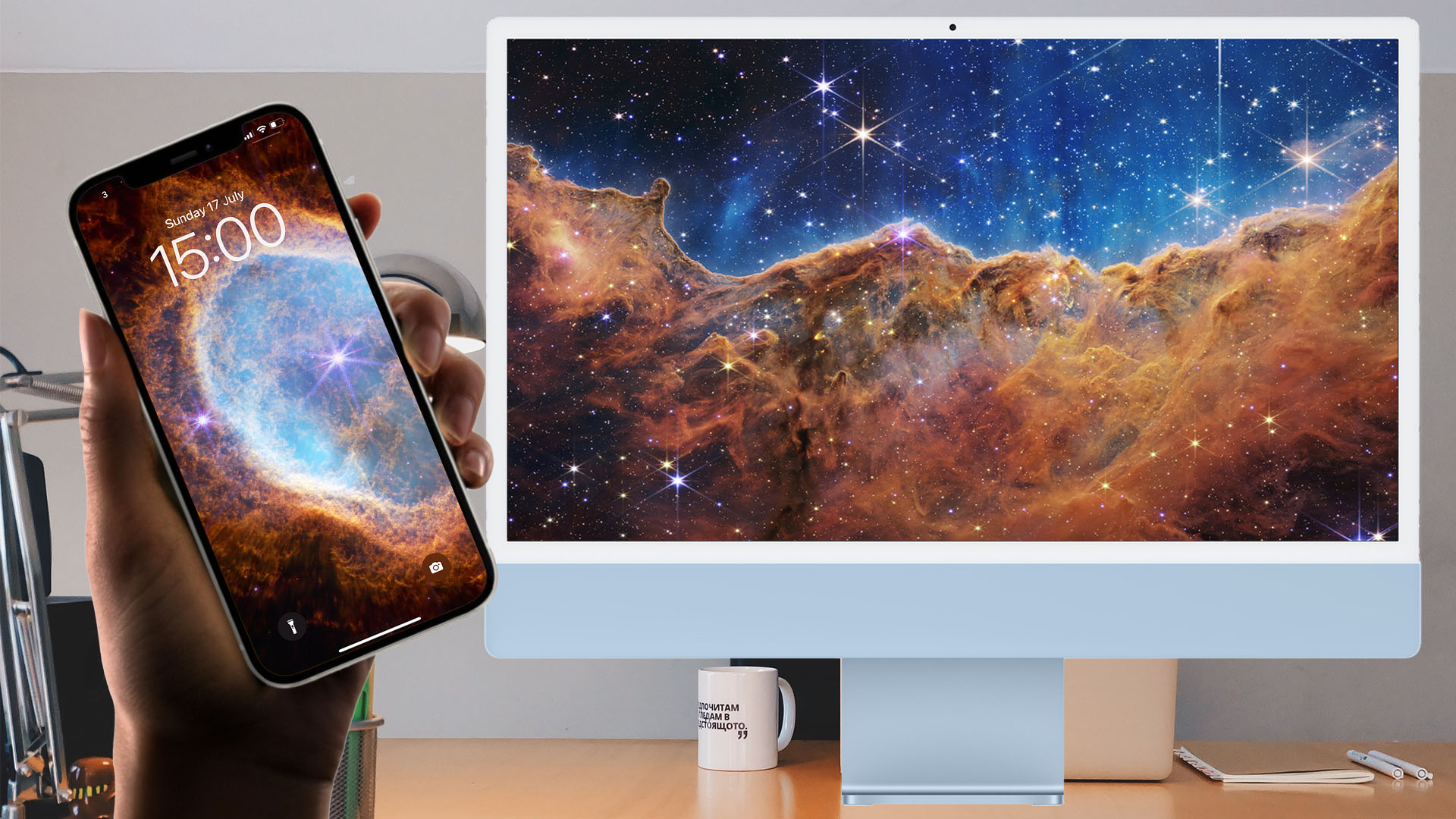Apple has a history of using some beautiful space images as wallpapers for the Mac, especially back in the MacOS X Big Cat days. Now the JWST (James Webb Space Telescope) is sending some beautiful images of the universe back to earth, so I thought I’d share these in the perfect resolution for any Apple display up to the Pro Display XDR at 6K.
Copyright?
You can find all the original images here but all Nasa space telescope imagery is in the public domain, which means we’re pretty safe here. So, feel free to download and enjoy. Below the images I’ll share a little history and information about JWST too, just in case you’re interested.
Southern Ring Nebula


This scene was created by a white dwarf star – the remains of a star like our Sun after it shed its outer layers and stopped burning fuel through nuclear fusion. Those outer layers now form the ejected shells all along this view.
“Cosmic Cliffs”

What looks much like craggy mountains on a moonlit evening is actually the edge of a nearby, young, star-forming region NGC 3324 in the Carina Nebula. Captured in infrared light by the Near-Infrared Camera (NIRCam) on NASA’s James Webb Space Telescope, this image reveals previously obscured areas of star birth.
Called the Cosmic Cliffs, the region is actually the edge of a gigantic, gaseous cavity within NGC 3324, roughly 7,600 light-years away. The cavernous area has been carved from the nebula by the intense ultraviolet radiation and stellar winds from extremely massive, hot, young stars located in the center of the bubble, above the area shown in this image. The high-energy radiation from these stars is sculpting the nebula’s wall by slowly eroding it away.
Stephan’s Quintet

With its powerful, infrared vision and extremely high spatial resolution, Webb shows never-before-seen details in this galaxy group. Sparkling clusters of millions of young stars and starburst regions of fresh star birth grace the image. Sweeping tails of gas, dust and stars are being pulled from several of the galaxies due to gravitational interactions. Most dramatically, Webb’s MIRI instrument captures huge shock waves as one of the galaxies, NGC 7318B, smashes through the cluster. These regions surrounding the central pair of galaxies are shown in the colors red and gold.
This composite NIRCam-MIRI image uses two of the three MIRI filters to best show and differentiate the hot dust and structure within the galaxy. MIRI sees a distinct difference in color between the dust in the galaxies versus the shock waves between the interacting galaxies. The image processing specialists at the Space Telescope Science Institute in Baltimore opted to highlight that difference by giving MIRI data the distinct yellow and orange colors, in contrast to the blue and white colors assigned to stars at NIRCam’s wavelengths.
The James Webb Space Telescope (JWST)
JWST has a segmented primary mirror 6.6m across, broken up into 18 hexagonal segments – this is what gives the distinctive 6 pointed star look to the brightest objects – typically nearby stars in the foreground.
The furthest objects in the images are 13.1bn light years away, and their light was emitted close to the beginning of the Universe, the Big Bang.
JWST was launched on Christmas Day, December 25th 2021 on an ESA Arianne 5 from French Guyana, and has a minimum of 5 years operational life, though many space telescopes missions get extended far beyond their initial expectation.

